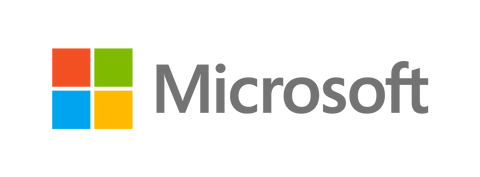Microsoft Organizational Structure in 2025
Microsoft Organizational Structure in 2025

Microsoft Corporation
NASDAQ: MSFT
One Microsoft Way
Redmond, WA 98052-6399
United States
Main Phone: (425) 882-8080
Website: https://www.microsoft.com
Industry Sector: Technology - Software, Infrastructure
Full Time Employees: 221,000
Annual Revenues: $135.62 Billion
Fiscal Year End: June 30, 2023
CEO: Satya Nadella, Chairman & CEO
Fortune Rank: #13 (2023)
Microsoft Business Description
Microsoft is a multinational technology corporation that provides a wide range of products and services, including computer software, consumer electronics, and personal computers. The company is led by Satya Nadella, who has been the CEO since 2014 and is responsible for overall strategy and decision-making for the company.
One of the key aspects of Microsoft's organizational structure is its focus on product innovation and customer service. The company is organized around its various business units, each of which is responsible for a specific product or service. This allows the company to effectively and efficiently manage its product development and marketing efforts and respond to the needs of its customers. Microsoft has dedicated teams for product development, engineering, and customer service, which work closely together to ensure that the company's products and services meet the needs of its customers.
Another key aspect of Microsoft's organizational structure is its decentralized approach. The company operates through a number of subsidiaries, each of which is run by its own management team. This allows for a more focused approach to different areas of the business and allows the subsidiaries to operate with a high degree of autonomy. This decentralization also enables the management teams of the subsidiaries to make decisions quickly and efficiently, and to respond to changes in the market or their respective industries.
In the company's 2022 10-K filing, Microsoft outlined several growth strategies that it plans to implement in the coming years. One of the key strategies is to expand its cloud-based services, such as Azure, which offers a wide range of products and services, including virtual machines, storage, and analytics. This will help the company to tap into the growing demand for cloud-based services and drive revenue growth.
Another growth strategy outlined in the 10-K is to expand its presence in the Internet of Things (IoT) market. Microsoft plans to do this by developing new IoT products and services that will help to improve the efficiency and reliability of connected devices. This will help the company to tap into the growing demand for IoT products and services and drive revenue growth.
Finally, Microsoft also plans to expand its presence in the gaming market. The company plans to do this by developing new gaming products and services, such as its Xbox console, and by expanding its partnerships with game developers and publishers. This will help the company to tap into the growing demand for gaming products and services and drive revenue growth.
In conclusion, Microsoft's organizational structure is designed to support its focus on product innovation, customer service, and its decentralized approach.
Complete the form below to request a sneak peek at the Microsoft Org Chart & Sales Intelligence Report.
